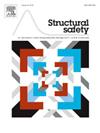Moving toward resilience and sustainability in the built environment
IF 6.3
1区 工程技术
Q1 ENGINEERING, CIVIL
引用次数: 0
Abstract
Developing and managing infrastructure requires considering the system's physical performance and operational, financial, social, environmental, and managerial aspects. These aspects interact in a dynamic environment that evolves and changes continuously. Changes in demand, socio-economic pressures, and the increasing frequency and intensity of natural events – exacerbated by climate change – make resilience and sustainability essential for the built environment's current and future performance. Sustainable infrastructures add value to society and maintain social equity and justice through time. To achieve this, it is necessary to consider socio-economic as well as environmental aspects. On the other hand, resilience focuses on recovery in case of a damaging event, a critical property that minimizes functionality disruptions. This paper presents a conceptual discussion about the role of resilience and sustainability in relationship with infrastructure and the built environment's design and operation. It provides insight into risk-informed decision-making for evolving infrastructure systems, and change based on a systems-thinking approach. These concepts are central to the built environment's safe and responsible evolution and growth. In the end, the paper identifies challenges and proposes future research paths.
实现建筑环境的复原力和可持续性
开发和管理基础设施需要考虑系统的物理性能和操作、财务、社会、环境和管理方面。这些方面在不断发展和变化的动态环境中相互作用。需求的变化、社会经济压力以及自然事件的频率和强度的增加(气候变化加剧了这一变化)使得复原力和可持续性对建筑环境当前和未来的表现至关重要。随着时间的推移,可持续的基础设施为社会增加价值,维护社会公平和正义。要做到这一点,必须考虑社会经济和环境方面。另一方面,弹性侧重于在发生破坏性事件时的恢复,这是将功能中断最小化的关键属性。本文从概念上讨论了弹性和可持续性在基础设施和建筑环境的设计和运营中的作用。它为不断发展的基础设施系统提供了风险知情决策的洞察力,并基于系统思维方法进行了更改。这些概念对于建筑环境的安全和负责任的演变和发展至关重要。最后,提出了未来的研究方向和面临的挑战。
本文章由计算机程序翻译,如有差异,请以英文原文为准。
求助全文
约1分钟内获得全文
求助全文
来源期刊

Structural Safety
工程技术-工程:土木
CiteScore
11.30
自引率
8.60%
发文量
67
审稿时长
53 days
期刊介绍:
Structural Safety is an international journal devoted to integrated risk assessment for a wide range of constructed facilities such as buildings, bridges, earth structures, offshore facilities, dams, lifelines and nuclear structural systems. Its purpose is to foster communication about risk and reliability among technical disciplines involved in design and construction, and to enhance the use of risk management in the constructed environment
 求助内容:
求助内容: 应助结果提醒方式:
应助结果提醒方式:


